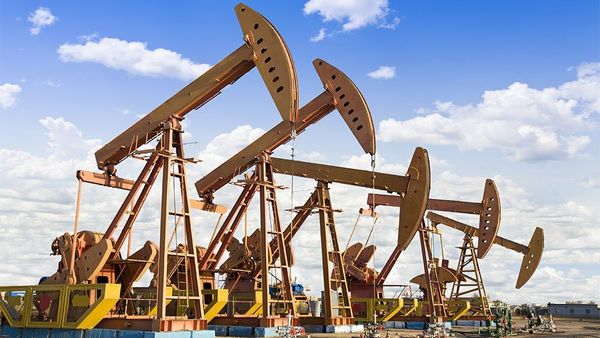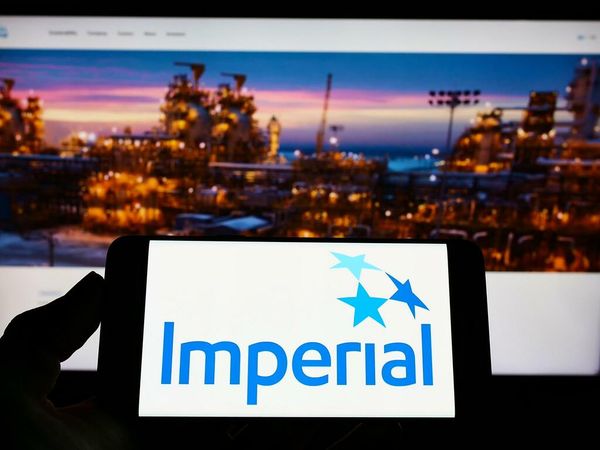Top oil and natural gas drilling equipment names Patterson-UTI Energy and Helmerich & Payne handily beat earnings estimates, as both companies reported optimistic outlooks for drilling contracts and oil production.
Helmerich & Payne Earnings; Oil Stocks
Estimates: Wall Street predicted Tulsa, Okla.-based H&P will earn 7 cents per share on $520 million in sales in the third-quarter.
Earnings: Helmerich & Payne reported earning 27 cents per share, a 147% increase. Sales grew 66% to $550 million.
Outlook: H&P expects gross capital expenditures to remain at around $250-$270 million for the full fiscal year. H&P ended the quarter with 175 rigs, representing modest growth during the quarter. The company expects to exit the fourth-quarter with 176 active rigs.
"Fiscal discipline together with additional contractual churn allowed us to re-contract rigs without incurring additional reactivation costs and redeploy them at significantly higher rates. Our rapidly improving contract economics are primarily driven by H&P's value proposition to customers in a tight market for readily available super-spec rigs." CEO John Lindsay said in a statement.
Lindsay added that capital discipline by many land rig operators combined with supply chain and labor constraints are "governing the drilling industry's cadence of reactivating idle super-spec rigs at scale."
"This will likely perpetuate the supply-demand tightness for super-spec rigs leading to further improvements in our contract economics," he said.
HP stock trimmed losses ending Thursday's market trading down 0.74% to 44.33. The stock jumping nearly 6% Wednesday.
Founded in 1920, the former shipyard is a leading drilling rig manufacturer as well as services contractor, primarily for oil and gas exploration companies. It builds and operates drilling rigs across the world and also develops advanced automation, directional drilling and survey management technologies. It operates in South America, the Middle East and the U.S.
In the second-quarter, HP reported a net loss of 17 cents per share and $468 million in revenue. Helmerich & Payne forecasts gross capital expenditures will be around $250-$270 million for the full fiscal year. The company expects about 50% of that would go toward operation maintenance.
Helmerich & Payne ranks second in the Oil&Gas-Drilling industry group. The group itself ranks No. 34 among the 197 industry groups tracked by IBD.
HP stock has a Composite Rating of 80. Its Relative Strength Rating is 96, an exclusive IBD gauge that shows how a stock's performance over the last 52 weeks holds up against all the other stocks in IBD's database. It also has a 53 EPS Rating.
Patterson Energy Earnings
Estimates: Analysts forecasted $568 million in revenue and a net loss of 3 cents per share in the second-quarter.
Earnings: Patterson-UTI reported that EPS increased 184% to 11 cents. Revenue grew 22% to $622 million.
Outlook: The company increased its forecast for 2022, and now expects an adjusted EBITDA exceeding $600 million, up from more than $500 million after Q1. PTEN also increased its capital spending forecast t0 $390 million, compared to an earlier estimate of $350 million. The company is changing its capital expenditures forecast due to "increasing activity, including long-lead time items for rigs to return to work in 2023 and cost inflation."
Patterson-UTI average rig count in the U.S. increased by six rigs to 121 in Q2, compared to 115 rigs in the first-quarter. The company expects its rig count average to be 128 for the third-quarter. On July 6, PTEN announced it had on average 124 drilling rigs operating in the U.S. in June.
"Market fundamentals are strong, as demand is increasing for drilling and completions equipment and services, and industry supply remains constrained. We expect the strong demand for our services to continue, and we anticipate further improvements in pricing and activity," CEO Andy Hendricks said in a press release.
PTEN stock gained 3.27% Thursday after rallying 8.27% to 15.31 Wednesday. Houston-based Patterson-UTI is the industry's second largest provider of oil field drilling equipment and contracting services. The company provides land drilling and pressure pumping services, directional drilling, rental equipment and technology to clients throughout North America. In 2001, Patterson Energy and UTI Energy merged to form Patterson-UTI.
Patterson-UTI reported a net loss of 13 cents per share in Q1 on $509 million in sales. Patterson Energy ranks third in the Oil&Gas-Drilling industry group. It has a Composite Rating of 79. Its Relative Strength Rating is 97 and it has an EPS Rating of 53.
Both oil stocks pulled back after six-month rallies to June highs, and are rebounding following tests of support at their 40-week moving averages.
Oil And Gas Market
Oil stocks have led the stock market's upside by long strides for much of 2022. At the top of that group, oil and gas drillers have posted top gains. Shares of land rig leaders PTEN, HP and Nabors Industries have all nearly doubled in price since the beginning of the year. However, U.S. crude futures, which angled sharply higher following Russia's invasion of Ukraine in February, have retreated to test technical support at around $94 per barrel.
Meanwhile, the number of active oil rigs in the U.S. has recently jumped. Last week there were 758 active oil rigs in the U.S., an increase of two from the previous week, according to Baker Hughes. BKR releases weekly oil rig counts every Friday. In early June, there were 727 active U.S. oil rigs, a 60% increase from last year's depressed activity.
U.S. crude oil production should run around 11.9 million barrels per day for all of 2022, an average increase of 700,000 barrels a day compared to 2021, according to the U.S. Energy Information Administration. EIA forecasts also suggest output in 2023 will rise to more than 12.8 million barrels per day. If this prediction holds, it would surpass the annual average record of 12.3 million barrels per day set in 2019.
Gas prices at the pump averaged $4.27 Thursday, according to AAA data. U.S. crude oil was up more than 2% Thursday before falling to around $97 per barrel. Natural gas price futures slumped more than 5%, trading around $8.2 per million British thermal units Thursday. Prices briefly hit $9.70 Tuesday morning, a high not seen since 2008.
Please follow Kit Norton on Twitter @KitNorton for more coverage.










